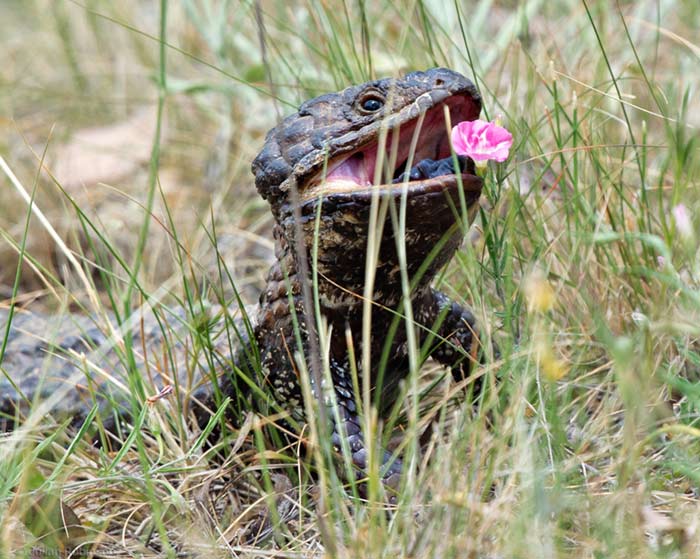Great photo Mark; years ago in the course of long b watching trip in centre with 1 eccentric Bob Weston, we went to the shingleback races @ Eulo; comical.
Sz
From: Mark Clayton [
Sent: Wednesday, 19 November 2014 12:53 PM
To: 'Julian Robinson'; 'Jack & Andrea Holland';
Subject: RE: [canberrabirds] Flower-munching shingleback. Was: RE: [canberrabirds] Woodswallows
Julian ,
You were right the first time. The last time I looked the Shingleback has been placed in the same genus as the Common Bluetongue.
Cheers,
Mark
From: Julian Robinson
Sent: Wednesday, 19 November 2014 12:24 PM
To: 'Jack & Andrea Holland'; m("canberrabirds.org.au","canberrabirds");">
Subject: RE: [canberrabirds] Flower-munching shingleback. Was: RE: [canberrabirds] Woodswallows
Oooops, the image is below. I was tired and don’t know why I said ‘shingleback bluetongue’ I meant to describe a blue-tongued Shingleback. Flowers are a normal part of their diet but I’ve never seen any lizard eating flowers before. Campbell Park was in full flight that morning (last Saturday), many birds, much breeding, nesting and calling.

Here’s the flower-munching shingleback bluetongue Jack mentioned we saw last Saturday at Campbell Park. It happily munched its way slowly around the meadow as we watched for some time, eating only flowers - no grass and no insects.
Late this morning while doing a rekkie for tomorrow’s nest workshop at Campbell Park, one of the first things I heard was the “check, check” of the white-browed/masked woodswallows. I estimated there were at least 50 mainly circling around, but Julian Robinson who was also there said he had seen at least 100. Interestingly he said they weren’t there first thing, but had moved down from the higher areas mid morning.
Due to poor light I wasn’t able to estimate the % of white-browed compared with the masked though the half dozen or so I saw perched were all white-browed. No surprise to see them arrive in Canberra, given the dried out conditions out west, whether more will come and they stay to breed is not able to be predicted given we’re also very dry. Some rain would certainly help.
An added bonus was a very large shingle back right in front of us snapping off and eating flowers. As opposed to the blue tongue I’ve rarely seen this in the ACT, though Cogger does show we’re on the eastern edge of its range. Julian took a heap of photos which he may share with us.

